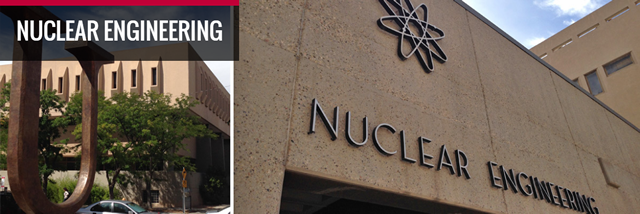
Nuclear Engineering ETDs
Publication Date
Fall 10-30-2017
Abstract
The University of New Mexico spectrometer experimental work has been used to provide an event-by-event fission product measurement to aid in filling in the gaps in existing fission product yield data, as part of the Los Alamos National Lab Spectrometer for Ion Detection in Fission Research project (SPIDER) collaboration. This thesis examines the time-of-flight (TOF) component of the spectrometer towards improving the resolution of the system. Different thicknesses of TOF conversion foils were examined with alpha particles and fission fragments: 20, 55, and 100 µg/cm2 carbon foils. For the thinnest carbon foil studied, a timing resolution of 160 ps FWHM over 32 ns, or 0.5 %, was extracted for 239Pu alphas. Experimental results and simulations were compared for energy loss of 252Cf fission fragments. SRIM underestimated what the energy loss from carbon foils the thinner the foils with an Experiment/SRIM energy loss ratio of 1.8 for heavy fragments and 1.4 for light fragments for a 21 µg/cm2 carbon foil; and overestimated energy loss from 200 nm silicon nitride window with a ratio of 0.9 and 0.8, respectively. MCNP gives numbers that more closely match experiment values with an Experiment/MCNP ratio of 1 for heavy fragments and 0.9 for light fragments for a 21 µg/cm2 carbon foil; and ratio of 0.85 and 0.97, respectively for a 200 nm silicon nitride window. The full system resolution was analyzed and calculations suggest a mass resolution using 20 µg/cm2 conversion foils of 0.92% for light fission fragments and 0.73% for heavy fission fragments.
Keywords
Nuclear engineering, Fission, Energy Loss
Document Type
Thesis
Language
English
Degree Name
Nuclear Engineering
Level of Degree
Masters
Department Name
Nuclear Engineering
First Committee Member (Chair)
Dr. Adam Hecht
Second Committee Member
Dr. Gary Cooper
Third Committee Member
Dr. Cassiano R. E. de Oliveira
Recommended Citation
Fellows, Shelby. "TIME-OF-FLIGHT AND ENERGY LOSS ANALYSIS ON THE UNM FISSION FRAGMENT SPECTROMETER." (2017). https://digitalrepository.unm.edu/ne_etds/64
